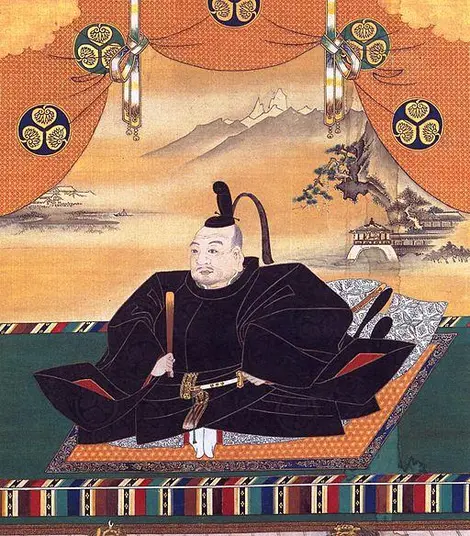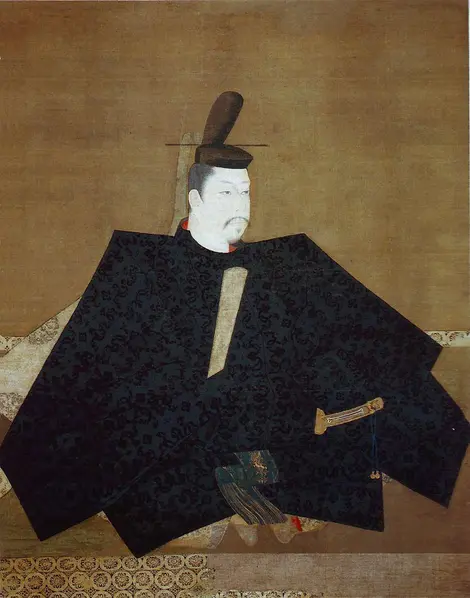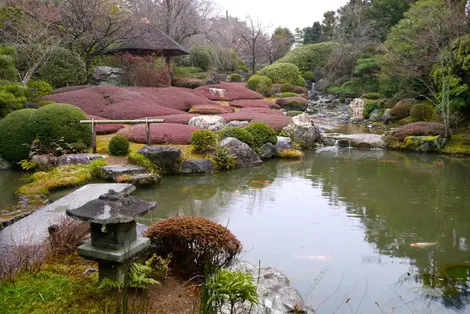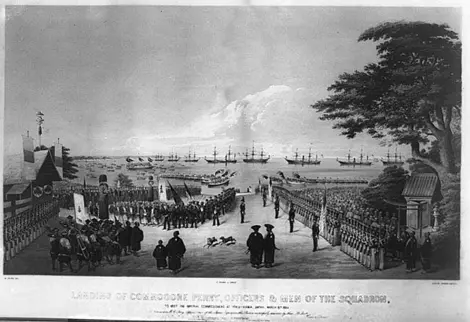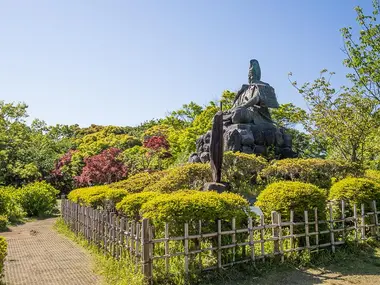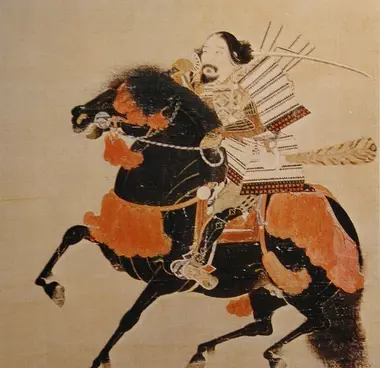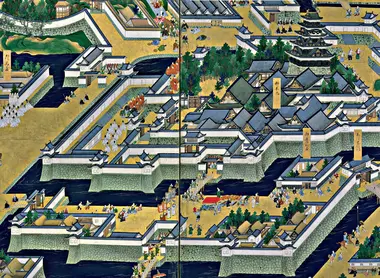The shogunate, history and legacy of Japan's military dictatorship
- Published on : 11/02/2024
- by : S.R.
- Youtube
The shogunate refers to a feudal military system of government that ruled Japan for several centuries, between the Heian era and the Meiji Restoration. Under the authority of a shogun, general-in-chief and true ruler of the country, the shogunate profoundly influenced Japanese history and culture. Discover the different shogunates who succeeded one another, how they functioned, their influence and the imprint they left on the cities that were their seat of power.
The origins of the shogunate: the first shoguns of the Heian period
Originally, the term "shogun" referred to a general in charge of leading the conquest and pacification of the Tōhoku region against the native Emishi populations. The full title was " seii taishōgun ", meaning "great general pacifier of the barbarians". The most famous of these shoguns was Sakanoue no Tamuramaro, also founder of Kyoto's Kiyomizu-dera temple. Once the conquest of Tōhoku was completed, the title fell into disuse.
It wasn't until the 11th and 12th centuries, when the samurai became the country's dominant force, that the shogunate really emerged. At this time, warriors in the pay of large landowners took power over the aristocratic court in Kyoto. In 1185, they imposed their military dictatorship with the creation of the first " bakufu " (literally "tent government") in Kamakura by Minamoto no Yoritomo. Thus was born a shogunal power that would endure for almost 700 years.
The Kamakura Shogunate, Japan's first military dictatorship (1192-1333)
Founded by Minamoto no Yoritomo in 1192, the Kamakura shogunate was Japan's first feudal military government. Yoritomo received the title of shogun from the emperor after his victory in the civil war between his clan, the Minamoto, and the Taira. He established the fishing village of Kamakura as the country's political and military capital.
Although this shogunate was quickly dominated by the Hōjō clan, who monopolized the office of regent(shikken), it laid the foundations for a feudal system based on the growing power of provincial lords(shūgo) to the detriment of imperial authority. This was the beginning of Japan's long feudal history.
Today, Kamakura is a charming seaside resort popular with Tokyoites. But many remains bear witness to its past as a shogun capital, with no fewer than 65 Buddhist temples. Among the most important are the five great Zen temples(gozan), including Kenchō-ji, founded in 1253. And don't miss the Tsurugaoka Hachiman-gū shrine, symbolizing the power of the Minamoto family.
The Ashikaga shogunate and its cultural influence from Kyoto (1336-1573)
Founded in 1336 by Ashikaga Takauji, the Ashikaga shogunate settled in the Muromachi district of Kyoto, hence its other name of "Muromachi shogunate". As its shoguns were close to the imperial court, this shogunate was weaker than the others. The feudal lords(daimyō) became increasingly autonomous over time.
However, the Muromachi period was a cultural golden age under the patronage of the Ashikaga shoguns. Kyoto saw the rise of many arts, including Nō theater, the tea ceremony and bonded poetry. Zen Buddhism spread from the temples of Mount Hiei, and Zen gardens flourished in the capital.
Today, the former imperial capital still fascinates with its traditional charm and cultural treasures inherited from that era. To visit Kyoto in the footsteps of the Ashikaga shoguns is to discover the refinement of classical Japanese culture through emblematic sites such as the Gion district, Philosophy Road and the Gold and Silver Pavilions.
The Tokugawa shogunate, apogee and end of the shogun regime (1603-1868)
Founded in 1603 by Tokugawa Ieyasu, one of the three unifiers of the country at the end of the 16th century, the Tokugawa shogunate marked the apogee of shogunal power. From their capital in Edo (present-day Tokyo), the Tokugawa shoguns imposed their absolute authority over the whole of Japan for over 250 years.
They established a strict caste system, with samurai at the top of the social hierarchy, and maintained internal peace by keeping feudal lords under tight control. In particular, feudal lords were obliged to reside every other year in Edo, leaving their families hostage under the system of alternate residence(sankin kōtai).
Despite its authoritarianism, the Tokugawa shogunate was a period of great economic and cultural prosperity. Edo was transformed into a gigantic metropolis with a flourishing bourgeois culture. To visit Edo in the footsteps of the Tokugawa is to immerse yourself in the golden age of Japanese civilization, with its kabuki theaters, pleasure districts, prints and refined crafts.
The Tokugawa shogunate came to an end with the arrival of Westerners in the mid-19th century and the restoration of imperial power in 1868. But its legacy is still visible, whether in the shogunate dynasty's mausoleum, the Nikkō Tōshō-gū, or in Tokyo's old Edo districts.
The organization and functioning of the shogunate system
The shogunate was a feudal and military system led by the shogun, supreme leader of the samurai. The shogun ruled with the support of feudal lords(daimyō), to whom he granted fiefs in exchange for their loyalty. The samurai, professional warriors in the service of the daimyō, were the backbone of the regime.
At the top was the shogun, who held military, political and judicial powers, while symbolically recognizing the emperor's sovereignty. He was assisted by a council of elders(rōjū) made up of powerful daimyō. A complex system of parallel administrations between the fiefdoms and the central government enabled the shogun to control the country.
The shogunate established a highly hierarchical, fixed caste society, with samurai at the top, followed by peasants, craftsmen and merchants. Each group had a well-defined status, rights and duties. This organization lasted until the end of the Edo period.
On the economic front, the shogunate controlled foreign trade from the port of Nagasaki, the only port open to foreign ships (Chinese and Dutch) during the period when the country was closed(sakoku). It also monopolized coinage and levied taxes on agricultural production.
The legacy of the shogunate in the former shogunate capitals
The three shogunate capitals, Kamakura, Kyoto and Edo (Tokyo), have preserved many traces of their prestigious past:
- In Kamakura, the vestiges of the Minamoto shogunate are concentrated in the city's 65 Buddhist temples, with the Tsurugaoka Hachiman-gū shrine as a symbol of the warrior power of the time.
- In Kyoto, the refinement of Ashikaga culture is still palpable in Zen gardens, tea ceremonies and Nō performances. The Kinkaku-ji (Golden Pavilion) and Ginkaku-ji (Silver Pavilion) are two jewels of Muromachi architecture.
- In Tokyo, the Tokugawa legacy permeates the city's topography, with the site of Edo Castle, now the imperial palace, and the old merchant and pleasure districts. And don't miss the shoguns' mausoleum at Nikkō.
Visiting shogunate sites today: tips and access
To relive the history of the shoguns, here are a few practical tips:
- Kamakura is easily accessible by train from Tokyo (less than 1 hour). The main sites are concentrated to the east of the station. Allow at least one day.
- Kyoto is best visited over several days. Focus on the eastern districts (Gion, Higashiyama) for the Muromachi period. Remember to book your accommodation in advance.
- In Tokyo, the Edo-Tokyo park and museums allow you to immerse yourself in the atmosphere of the Tokugawa era. The Nikkō memorials are easily accessible by train from the capital.
The history of the shogunate is fascinating and a must for understanding the Japan of yesterday and today. By visiting the former shogunate capitals, you can feel all the power and refinement of this long period that shaped Japanese civilization. Enjoy your journey back in time!




